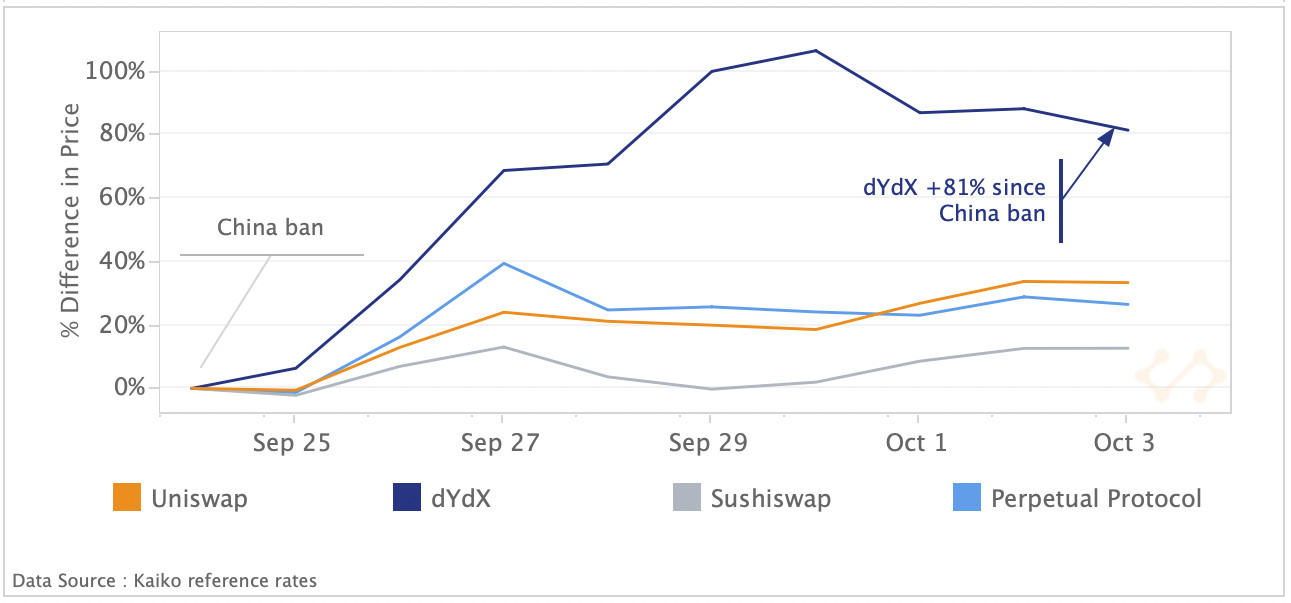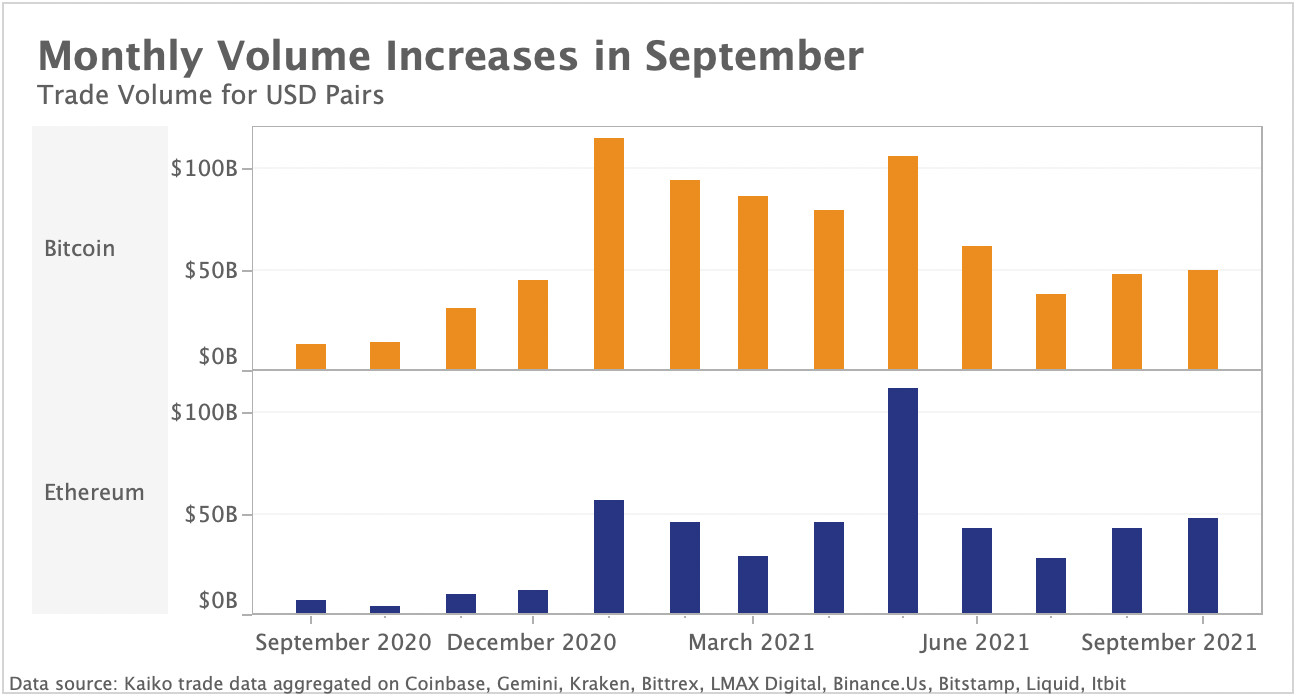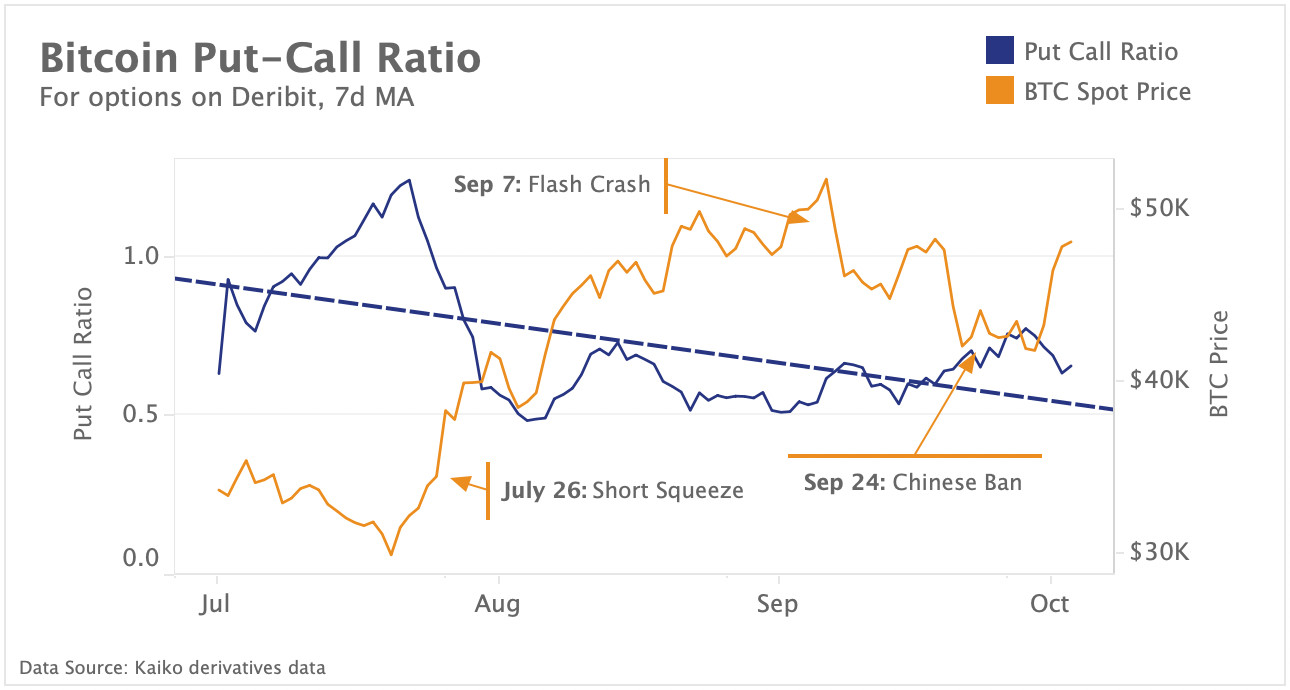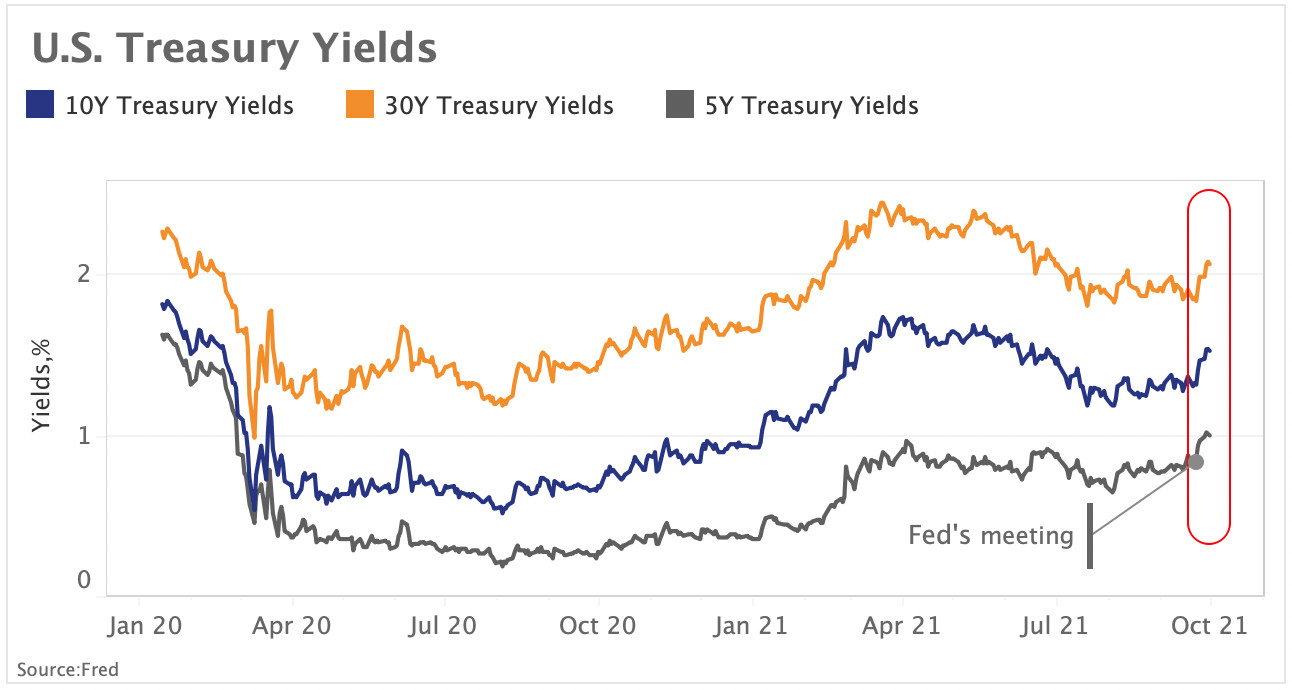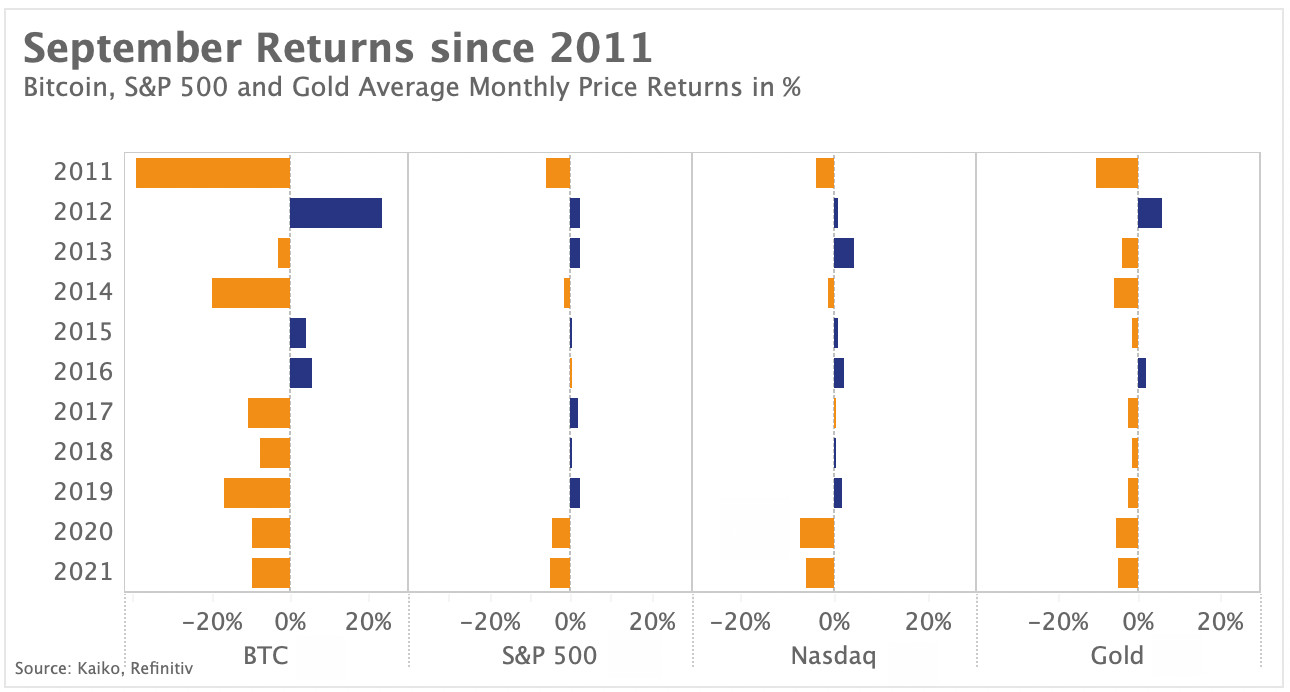A summarizing review of what has been happening at the crypto markets of the past week. A look at trending sectors, liquidity, volatility, spreads and more. The weekly report in cooperation with market data provider Kaiko.
The last 7 days in cryptocurrency markets:
- Price Movements: DEX tokens have surged since the China ban with DYDX up 80% over the past week.
- Volume Dynamics: Huobi has lost significant market share to Binance and Okex since January 2021.
- Order Book Liquidity: Market depth on BTC-USD order books remains strong despite Bitcoin's choppy month.
- Derivatives: Bitcoin's falling put-call ratio suggests renewed optimism.
- Macro Trends: U.S. Treasury Yields rallied last week as markets priced in the Fed’s hawkish tilt.
Strong Q3 returns and an October comeback

A new crypto ban out of China, regulatory pushback in the U.S., and traditional financial uncertainty caused a prolonged bout of volatility and negative returns throughout September. However, most top crypto assets ended Q3 well in-the-green, in stark contrast to Q2's bearish turn, with returns led by the NFT and L1 token sectors. Axie Infinity's in-game AXS token gained a staggering 1200% since July, while L1 tokens LUNA and AVAX gained +400%. Bitcoin and Ethereum posted relatively modest returns of +25% and +34%, respectively.
Historically, Q4 tends to be bullish for crypto, with both previous record-setting bull runs taking off around November. October is already off to a good start: SEC commissioner Gary Gensler reiterated support for an eventual crypto futures ETF, right as Canada approved its first multi-asset crypto ETF. The Chairman of the Fed also stated that the U.S. has no plans to ban crypto.
DEX tokens surge following China ban
A narrative made the rounds last week that the Chinese crackdown created a migration to DEX's, which saw a corresponding rise in volume. Correlation or coincidence, decentralized exchanges benefit from a nearly non-existent regulatory environment that could make them attractive to traders forced off of cenralized platforms. We chart the returns of decentralized exchange tokens since the China ban and observe that the native token of decentralized derivatives exchange dYdX leads the returns chart, gaining +80% in just 1 week. The tokens of Uniswap and Perpetual Protocols also ended the week up 33% and 26%, respectively. Centralized exchange tokens issued by Huobi and Okex dropped double digits following the ban, which suggests the value of these tokens could serve as a sentiment gauge for chinese exchanges.
China ban threatens exchange dominance

It has become increasingly clear that cryptocurrency exchanges will only be as successful as their efforts to 1) build a global presence and / or 2) work closely with regulators. There is too much risk relying on a single region for growth with the frenzied pace of regulatory crackdowns. Once one of the largest exchange's in the world, Huobi continues to lose market share to Binance and Okex, its two closest competitors. Binance has pursued global dominance while Huobi has relied heavily on the Asian region, despite the fractious regulatory environment. The majority of Huobi's clients actually live in China, although the exchange apparently attempted a global growth strategy without much success.
In May, a new round of Chinese restrictions hit Huobi hard, with Chinese censors reportedly blocking the word "Huobi" on social media. We can observe the difference in market share of volume from January to September, with Huobi's market share falling from 24% to 16%. Both Okex and Binance have gained market share since then, and Okex now possesses higher spot volumes for the first time. Last week, Huobi announced to its customers that it would begin phasing out Chinese accounts, which suggests that the impact of the ban on volumes could be even greater in the coming months.
Crypto trading volume are on the rise
September's choppy market conditions resulted in the third highest monthly volumes for Ethereum ever recorded, at nearly $50 billion across the leading fiat exchanges. Bitcoin volumes still remain well below early winter highs, although there was a month-on-month increase from August to September. Compared with last September, volumes for both assets are more than three times greater, which shows just how much crypto markets have grown over the past year.
Bitcoin's falling put-call ratio suggests renewed optimism
The put-call ratio is a widely-used measure in options markets to gauge overall sentiment and is calculated by taking the ratio of traded volumes for puts and calls. Traders buy call options to bet on price increases and seek protection via puts if they foresee price declines. For example, a put-call ratio of 0.5 indicates that daily put volumes are half that of call volumes. A rising ratio is viewed as bearish since it suggests that traders are purchasing more puts (bearish bets) than calls (bullish bets). We chart the put-call ratio for Bitcoin options on Deribit during Q3, which accounts for the lion-share of option volumes, to gauge evolving market sentiment. The ratio, which had been range-bound since August, jumped in September as traders sought protection against volatility and falling sentiment. Over the past week, the ratio has fallen which suggests that bearish sentiment could be abating as traders look forward to Q4, which is traditionally a strong quarter for cryptocurrencies with renewed optimism.
Higher treasury yields weigh on equity markets in September
Yields on U.S. Treasuries rallied last week as markets priced in the Fed’s hawkish tilt in addition to rising macro uncertainties around Chinese growth and the U.S. debt ceiling crisis. Above, we chart the yields on 5, 10 and 30-year Treasuries. We observe that financial conditions have tightened significantly since the Fed’s meeting, with 10-year yields up over 23bps since September 22. Yields on 5-year notes and 30-year bonds also spiked by 15 and 25 bps respectively. Higher yields make equities less attractive relative to risk-free Treasuries and weigh on asset valuations, especially risky assets such as tech stocks.
The tech-heavy Nasdaq 100 tanked 5.9% in September for the first time since March while the broader S&P 500 declined by 4.8% after increasing for ten consecutive months. While Bitcoin moved in line with global markets in September, ending the month in the red (down 9.5%), a series of positive news events boosted the markets in the first few days of October.
September slump affects gold and Bitcoin
September is historically one of the worst months of the year for equity markets as it precedes the end of the fiscal year for mutual funds and marks a behavioural shift in portfolio allocations after the summer (among some theories). Above, we chart September returns for Bitcoin and traditional assets over the past ten years. We observe that the so-called “September effect” pervaded across asset classes including gold and crypto. Major equities registered two straight years of negative September returns. The month appears to be particularly bad for safe-haven gold and Bitcoin, which saw negative returns for most of the past decade.



